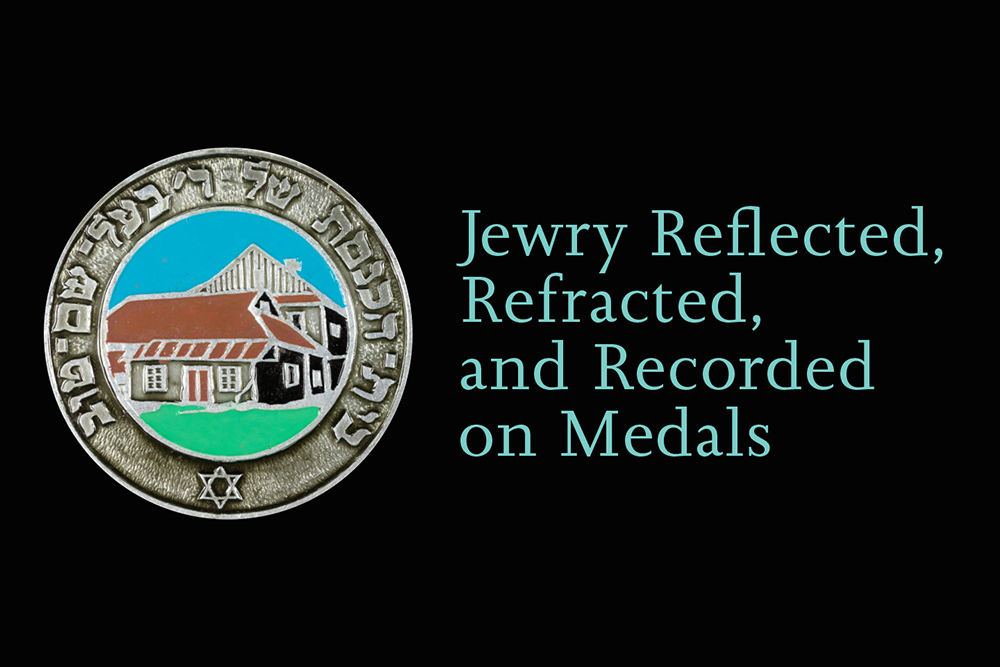Jewry Reflected, Refracted, and Recorded on Medals

This exhibition presents artifacts that were a part of Jewish lives, have survived, and have a story to tell. Coins, medals, and related items, like books and prints, are replicated and disseminated to achieve a wide distribution. Coins are exclusively the prerogative of sovereign governments, so their imitative successors—medals, tokens, and badges—retain an aura of authority.
Coins are an official means of monetary exchange. Tokens circulate as coin-like objects issued by local entities—towns, communities, institutions, even private merchants—so their circulation is only valid regionally. Medals resemble coins, but need not be small and are textually and pictorially free to present a wider range of subject matter. Medallic sponsors may be communal, institutional, commercial, even individual. Medals often function as rewards for personal achievement—military, academic, communal, scholastic, athletic—or to commemorate dedications, or religious and other noteworthy occasions. Medals honor both the living and the dead and may serve as proof of personal participation in group events or as souvenirs of private experiences. Insignia, worn externally, serve to indicate and project status and affiliation. Amulets worn individually offer protection, displaying biblical texts and images.
Except for a very brief period two thousand years ago, until the foundation of Israel in 1948 there were no Jewish national governments and consequently no official Jewish coins. But medals, tokens, insignia and amulets have been used extensively by Jews for centuries.





